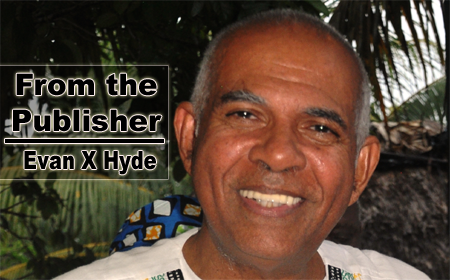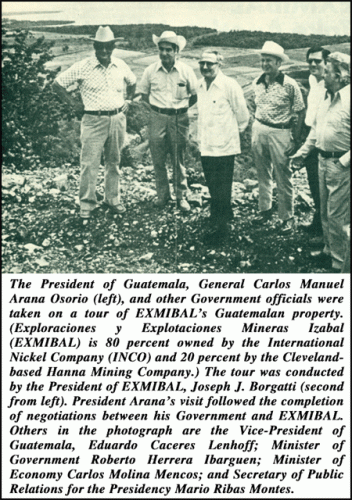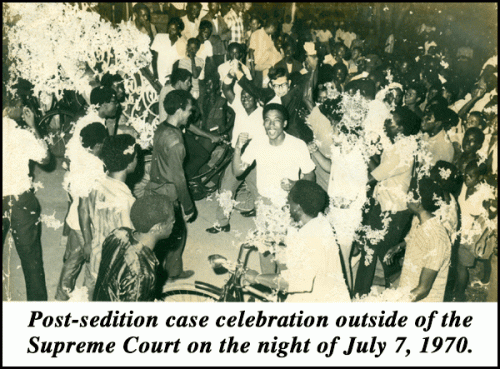If it is necessary to turn the country into a cemetery in order to pacify it, I will not hesitate to do so.
– Guatemalan President, General Carlos Arana Osorio, 1971
( – pg. 425, POWER IN THE ISTHMUS: A Political History of Modern Central America, by James Dunkerley, Verso, 1988)
If, as Carlos Fuentes says, “Western amnesia is selective,” it proves highly resilient with respect to the victims of what passes for “Western civilization” when these are not so to speak, of the West. Perhaps for this reason the extraordinary scope of political violence in Guatemala never attracted the international attention devoted to Argentina or Chile. For in Guatemala, the great majority of those killed were not Caucasian, middle-class and European in culture; they were “Indian,” indigenous Americans who if they speak Spanish at all, do so only as a second or third language, adhere resolutely to their autochthonous culture and appear both physically and in their tangible “otherness” to be Oriental.
( – pg. 431, ibid.)
… those who dominate Guatemala are still prone to describe the Indians who comprise over half the population as “animals” and more generally view them as a primitive people, eternally resistant to progress, indigenous to the land and yet inhabitants of a world alien to the Hispanic culture and polity that constitute state and nation. “Indian” is, in fact, the term employed by ladinos (technically, those of mixed race) to describe the collectivity of some twenty-two ethnic groups whose origins can be traced to a Maya-Quiche root. The diverse settlement, culture and languages – a dozen distinct tongues with a variety of dialects – of these people combine into a unique otherness for Guatemala’s “whites.” For the indigenous population they cohere as one only in terms of ladino oppression and are both deeply and finely differentiated as Quiche, Kekchi, Cakchiquel, Mam, Ixil, etc. self-identification as Indian being essentially determined by the outer, ladino world.
( – pg. 432, ibid.)
Between 1951 and 1970, the sedition law in British Honduras/Belize was used to arrest and try five Belizeans in the Supreme Court. Three of these five were leaders of the anti-colonial People’s United Party (PUP) – Leigh Richardson and Philip Goldson (tried, convicted, and jailed in 1951), and George Price (tried and acquitted in 1958). In 1951 and 1958, British Honduras was still a Crown Colony, and the British were in absolute control of the police and the judicial system.
In early March of 1970, however, British Honduras was a self-governing colony, and native Belizeans were in charge of the police and the judicial system, when Evan X Hyde and Ismail Omar Shabazz, president and secretary/treasurer, respectively, of the United Black Association for Development (UBAD), were arrested and tried in the Supreme Court under the sedition law.
At the time of the sedition arrests of X Hyde and Shabazz, UBAD was a cultural organization formed a year earlier in Belize City. In March of 1970, the ruling PUP was at the height of its power, having destroyed an Opposition NIPDM coalition less than three months before, by a margin of 17 seats to 1, in December 1969 general elections.
What kind of real danger to the PUP could UBAD possibly have represented in March of 1970? UBAD had been very popular in the streets of Belize City between May and September of 1969, but a coalition between October of 1969 and January of 1970 with the more politically-oriented People’s Action Committee (PAC), led by the attorneys Assad Shoman and Said Musa, had been ill-fated. That coalition had called itself the Revolitical Action Movement (RAM). Invited to join the Opposition NIPDM election coalition in November of 1969, RAM had refused the offer. In mid-January of 1970, UBAD and PAC separated and returned to their original identities. Or, at least, UBAD was in the process of beginning to re-organize itself when the sedition arrests were made.
Theoretically, it is possible that the decision to arrest the UBAD leaders was made on purely legal grounds, but the history of self-governing and independent Belize suggests strongly that such a decision would have been processed through the Cabinet of Belize, led at the time by Premier George Price and Deputy Premier C. L. B. Rogers. Vernon Harrison Courtenay was Attorney General in that Cabinet. (Three of the Ministers from that PUP Cabinet are still alive.)
The climate in Central America and the Caribbean was volatile in March of 1970. There was a civil war going on in Guatemala. In late February of 1970, Trinidad had begun to explode in a black power revolution which would include elements of the Trinidad army. Mexico and Jamaica were still destabilized as a result, respectively, of the Tlatelolco massacre of hundreds of students in Mexico City in early October of 1968, and the mid-October 1968 banning of the Guyanese history professor, Dr. Walter Rodney, from the Mona, Jamaica campus of the University of the West Indies by the Jamaican government, which had caused an uprising in Kingston. At the time of the UBAD sedition arrests, there were active black power movements going on in Bermuda, Jamaica, Barbados, Antigua and Barbuda, the aforementioned Trinidad, Grenada, Guyana, and even in the Dutch Caribbean.
UBAD was noisy and militant, but the alliance with PAC had left UBAD relatively weak. UBAD, moreover, was completely self-financed, and essentially broke. UBAD was not armed. UBAD was no real threat to the PUP government In March of 1970.
We would then say, with the benefit of hindsight, that the sedition arrests of the UBAD leaders must be considered a major mistake by the Price Cabinet. The immediate result of the arrests was to inflame and radicalize the UBAD leadership. The Supreme Court trial and acquittals of X Hyde and Shabazz re-energized the movement, which then decided to become a political party in August of 1970.
The decision, under duress, to become a political party, proved down the road to be a mistake by UBAD as an organization, but, in the short term, it led to UBAD’s developing an insurgent personality in 1972 which exposed the weaknesses of Belize’s security forces. The new Opposition party, the United Democratic Party (UDP), formed in September of 1973, benefited substantially from the UBAD uprisings in 1972. Prior to 1972, the PUP’s control of Belize City’s streets had been unquestioned, basically unchallenged, from the party’s foundation in 1950. In December of 1974, the UDP defeated the PUP in Belize City Council elections by a margin of 6-3. It was the PUP’s first such defeat in history. Two months earlier, in the October 1974 general election, the UDP had come within 17 votes of throwing the House of Representatives into a 9-9 deadlock. Though they won that election by a margin of 12 seats to 6, the mighty PUP was thoroughly shaken.
Let us now consider the issue of culture in the post-Columbus framework of power in the Americas. In the aftermath of the Italian Christopher Columbus’ “discovery” of the “New World” in October of 1492, Europeans began to invade the Americas and to conquer Indigenous inhabitants through military violence. Introducing horses, muskets, and weapons of steel into the Western Hemisphere, the Europeans established superiority on the battlefield, whereupon they set about destroying the various Indigenous cultures. European versions of the Christian religion became a powerful tool in the campaign to wipe out Indigenous cultures.
There is no more graphic example of how brutally the Europeans have imposed their post-Columbus regimes than to the west and south of us in Guatemala. Nowhere in the New World is the issue of culture so explosive as in Guatemala, where the Indigenous peoples have refused, despite military fire and brimstone, to give up their religions and cultures.
Some scholars have referred to the Europeans’ violent entry, more than five centuries ago, into the New World lands inhabited for millennia by thousands of Indigenous tribes, as a “clash of civilizations.” The Europeans outright won such clash. It was in the 1960s that the threat of nuclear Armageddon first raised dramatic doubts about the divine destiny and supremacy of European civilization, primarily amongst European youth. And it was in the said 1960s that a resurgence of interest in African and Indigenous history first sparked various movements of cultural resistance amongst the African and Indigenous peoples of the Western Hemisphere.
Although the Europeans overall succeeded in calming their young people after the turbulent 1960s, the 1992 quincentennial discourses to mark the 1492 Columbus voyage added much fuel to the fires of African and Indigenous cultural resistance which had first flared up in the 1960s.
Control of Belize by disguised white supremacy is enabled through a school system controlled by European versions of Christianity. Belize schools have, to a massive extent, refused to allow for the legitimacy of African and Mayan cultures.
It was in such a white supremacist context, perhaps, that the call for imprisonment of the UBAD leaders arose. And the contradictions within Belize’s post-colonial culture of subservience are exposed when our native Belizean leaders feel compelled to continue marking Columbus Day, October 12, as a national holiday. What the hell are we celebrating? At the same time, pressures from the African and Mayan resurgence are such that no Belizean leader dares call the name of Christopher Columbus on October 12, or whenever his holiday is marked. But the European religions which the Europeans forcefully introduced to us after the Conquest, have remained so culturally dominant here that we Belizeans continue to live in a bondage which is mental, but oh so real.
Power to the people.



